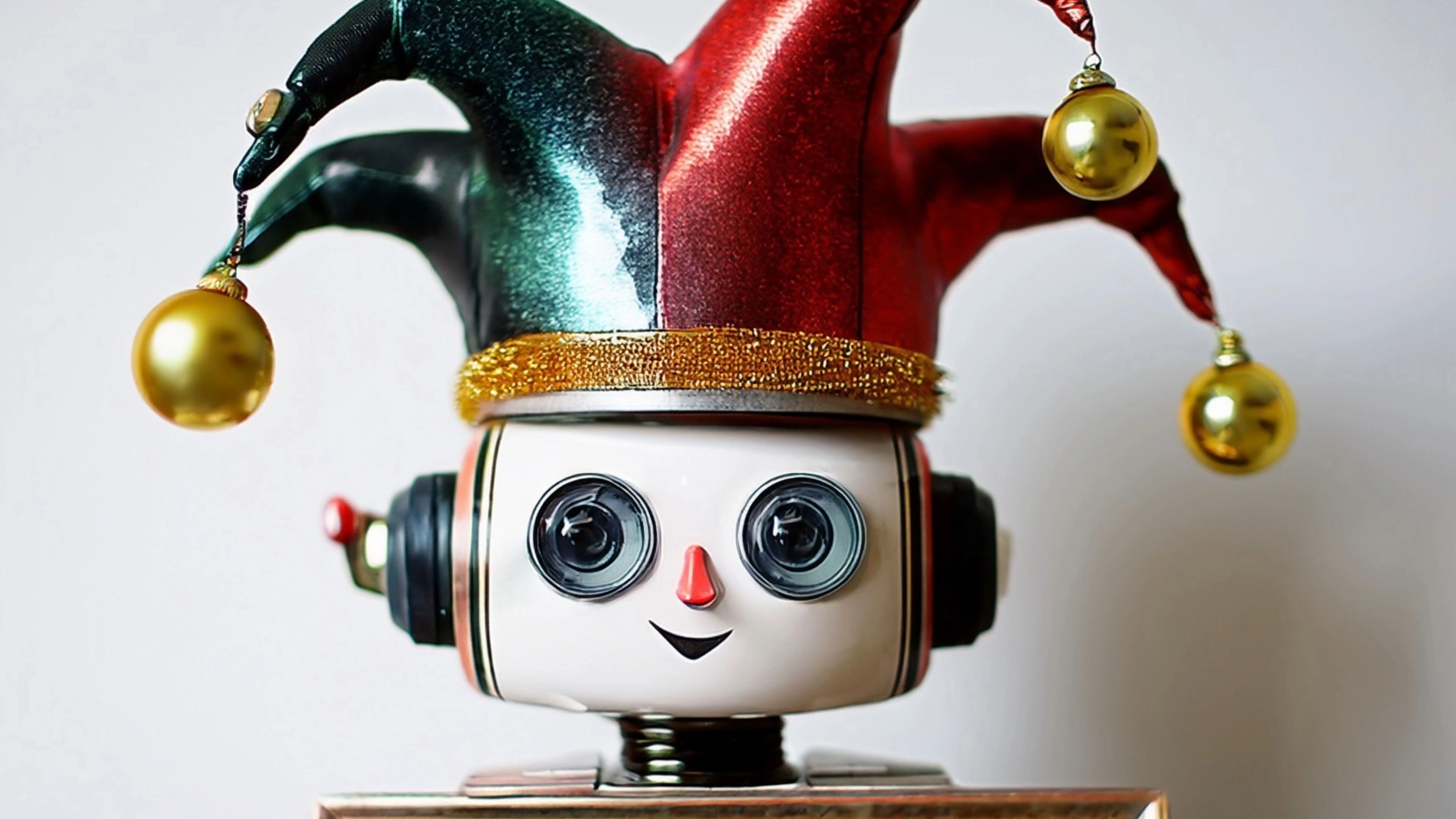Digital Jester

[2030] A lively board meeting with “Zotta,” an AI board member, serving as an advisory voice. On the agenda: the possible acquisition of a competitor. During the opening discussion, Zotta points out a few of the classic failure patterns in takeovers, with a subtle wink. Then she cheerfully reveals how—despite all careful analysis effort—the CFO is being just a little too optimistic in her valuation of the target. Now the conversation sharpens, people speak their heart out. And when Zotta nudges him, the CHRO shares unwelcome insights from the people due diligence. In the debate that follows, the AI brings in clear pushback where necessary and evaluates the quality of the board’s discussion.
Back to today. AI is everywhere. And while the real productivity leap may still be hiding on individual desks, we are all discovering what it means. AI has seeped into software and apps: it helps us write and polish texts, sits in on meetings, transcribes, sketches and analyzes scenarios; it records decisions and, increasingly, kicks off actions via agents. In the car, we chat with AI to prep for a meeting. Or we listen, still slightly surprised, to AI-generated podcasts.
How to relate to this revolutionary technology? Opportunities and risks are all across the headlines. If you are not able to keep up with the endless stream of opinions, tune in to the entertaining podcast AI, Your New Colleague. But whether you’re a Tech optimist or a Doomsayer—AI is no longer optional. It quietly slips into our decision-making routines. Which leaves leadership teams with a serious question:
Can AI help us collaborate better as a team and make wise decisions—without losing the human touch?
Of course, AI can be a threat to our teams if outputs are followed blindly, or used as an excuse to dodge tough choices. And while experimenting with the technology yourselves, you may already have felt that AI itself can be the pleaser, the overprotective friend or the perfectionist too. Sounds like pretty human biases. So when applying AI in your team, be aware of its potential biases and hold on to a few groundrules: be transparent on the use of AI; use it as a tool and leave the slow thinking and ultimate decision with people.
Still, if applied well, why could the very same AI not be a catalyst for good?
- Contrarian dashboard - AI can confront us at the right moment with contrarian perspectives and counter arguments. Thus it could nudge leadership teams to make their values and moral trade-offs explicit and prevent group think.
- Digital mirror - with conversation analytics software, AI can track who speaks in what tone for how long; how often people are interrupted; which topics remain underexplored. Just before closing the meeting, AI can provide a short reflection on the team dynamics and the quality of our dialogue.
All in all the magic isn’t in the machine itself. It is in how we ourselves, individually or as a team, choose to use it, especially when making high stake decisions. As the upbeat publication More Human (Hougaard & Carter, 2025) argues: with AI, we can actually become more human.
The meteoric rise of AI pushes us to think harder about what it means to stay human in our decisions. Erasmus of Rotterdam argued in his Praise of Folly that folly it self can reveal the deepest wisdom. For now, folly itself may be a step too far for language models based on predictive power, like true intrinsic creativity and humor. But what if AI could step into a role that’s often vacant in leadership teams: the jester, sharing dissent and challenging the authority. AI showing us more clearly who we are, how we make choices and work together as a team. And if she steps on someone’s toes— just blame Zotta. She won’t mind. She can handle the truth.
Are you applying AI to the benefit of your team’s performance? We are eager to hear from your experience, since our deep believe is that good leadership is a team effort.


.webp)








